kazoka30/iStock/GettyImages
The steaming versus pressure cooker debate yields two winners, since both methods preserve their vegetables’ maximum nutritional benefits and color intensity, cut cooking times considerably, and require little attention from a cook other than setting the process in motion. While both techniques cook by steaming, the main difference between the two is how long the process takes. Pressure cookers use high pressure water vapor at temperatures up to 250 degrees Fahrenheit to accelerate cooking, whereas all conventional steamers cook at 212 degrees, water’s boiling point.
How Steaming and Pressure Cooking Work
Just as water boils below its normal boiling point in the low-pressure environment of a mountaintop, for example, it exceeds boiling point in the sealed surroundings of a pressure cooker, with the added bonus of forcing moisture into the food. The fastest cooking times for pressure cookers are those which maintain a pressure of 15psi. Those that operate at a lower pressure will involve longer cooking times. For example, a cooker at 12 psi will typically require 20 percent longer cooking times. Steamers, on the other hand, cook at a uniform temperature whether they are stove-top or electric.
Pressure Cooking Advantages
A pressure cooker can be up to ten times faster than other cooking methods. At high pressure, cooking times can range from around one minute for leafy vegetables such as cabbage, spinach and greens, through a couple of minutes for winter and spring vegetables such as carrots, peas and broccoli, up to 10 minutes for tubers and root vegetables such as beets and large potatoes. However, pressure cooking is a fairly aggressive method that can be rough on delicate vegetables. Place the vegetables in a steamer basket on top of a trivet and add 1/2 cup for vegetables with short cooking times, doubling the water level for those that cook for longer than five minutes.
Steaming Advantages
Cooking vegetables in a steamer allows a chef time to simultaneously prepare a main protein, such as a chop or steak, which would be harder to achieve with a pressure cooker. Steam the vegetables either by placing them in a wire sieve or rack over boiling water and covering with a lid, or by using a dedicated steamer that heats water with an element, sending the vapor up through stacked plastic tiers. Chopping the vegetables before steaming can decrease the cooking time by increasing their surface area. Steaming times are not drastically different to pressure cooker times for leafy brassicas, which are done within five minutes, but larger tubers and roots will take considerably longer, sometimes up to half an hour.
Cooking Considerations
With both steamers and pressure cookers, take care when removing the lid at the end of cooking, as the steam can scald exposed skin. For vegetables with short cooking times in a pressure cooker, the secret is to work quickly and not to leave them in the cooker longer than necessary to avoid overcooking. Leave greens too long, for example, and they will lose some of their color. Running the pressure cooker under cold water before you open it helps equalize the pressure quickly, allowing you to remove the basket from inside and serve.
Related Articles

How to Steam Vegetables in an Electric ...

What Is the Difference Between a ...
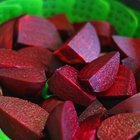
How to Cook Vegetables in a Silicone ...
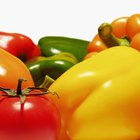
Nutrition Facts About Raw or Cooked ...

Can You Boil Broccoli & Carrots at the ...

How to Steam a Dress Shirt Vertically

The Definition of Non-Cognitive Skills

How Long Does It Take to Steam a Yam?

How to Steam Cook Cabbage

How to Steam Broccoli & Carrots With a ...
How to Steam Cook a Potato
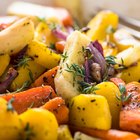
How to Roast Radishes, Parsnips, ...
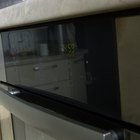
Halogen Oven Cooking Times
Does Slow Cooking Take Nutrients Out of ...
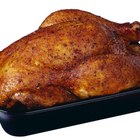
How to Use the Steamer on the Showtime ...
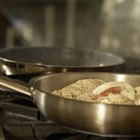
How to Slow Cook a Chicken Breast

Why Does Food Cook Faster in a Pressure ...

Disadvantages of a Solar Cooker

How to Cook Vegetables in the Microwave
How to Pressure Cook Medium Red Potatoes
References
Writer Bio
Nick Marshall is a UK-based writer specializing in trends and best-practice in the B2B sector.